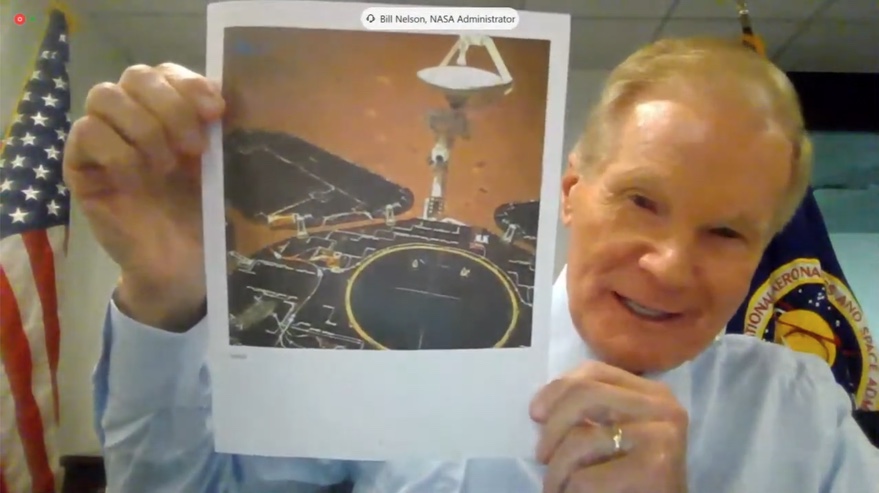WASHINGTON — NASA Administrator Bill Nelson congratulated China for successfully landing a rover on Mars, but also used the milestone to warn Congress of China’s competitive threat to American leadership in human spaceflight.
In a statement May 19, hours after the China National Space Administration (CNSA) released the first images taken by the Zhurong rover since its May 14 landing on Mars, Nelson congratulated China for being only the second country, after the United States, to land a spacecraft on Mars and operate it there for more than a brief period.
“As the international scientific community of robotic explorers on Mars grows, the United States and the world look forward to the discoveries Zhurong will make to advance humanity’s knowledge of the Red Planet,” Nelson said in the statement. “I look forward to future international discoveries, which will help inform and develop the capabilities needed to land human boots on Mars.”
NASA distributed the press release at the same time that Nelson was testifying before the House Appropriations Committee’s commerce, justice and science subcommittee. During that hearing, he used the Zhurong landing as a warning against American complacency in space exploration.
“I want you to see this photograph,” he said, brandishing one of the Zhurong images. He argued that the landing was evidence that China was serious about sending spacecraft to both the Moon and Mars, including, eventually, human missions. “I think that’s now adding a new element as to whether or not we want to get serious and get a lot of activity going in landing humans back on the surface of the moon.”
Nelson revisited the issue near the end of the two-hour hearing, again showing the Zhurong image. “It is a very aggressive competitor,” he said of China. “They’re going to be landing humans on the moon. That should tell us something about our need to get off our duff and get our Human Landing System program going vigorously.”
While Zhurong is on Mars, Nelson focused his concern on the moon. He said China is planning three “big landers” that will go to the south pole of the moon. He cited unnamed reports that claim that China is planning “a flyby and a lunar lander in the decade of the 2020s.” The implication, not explicitly stated by Nelson, is that the flyby and lander missions would be crewed.
In a presentation during a Royal Aeronautical Society conference May 19, Yao Jianting, deputy general secretary of CNSA, said China was planning a second lunar sample return mission, Chang’e-6, in 2024 or 2025. Two other lander missions to the lunar poles, Chang’e-7 and 8, are scheduled for between 2024 and 2028. That would be followed by an international lunar research station between 2030 and 2035, in cooperation with nations such as Russia.
However, Yao did not mention the crewed lunar flyby or lunar landing mission concepts that Nelson brought up at the hearing. Yao’s brief discussion of China human spaceflight programs focused on development of a space station over the next two years.
“This needs to be taken note of by the committee,” Nelson said of the Chinese lunar exploration plans he outlined at the hearing. He called on Congress to provide funding for the HLS program through a proposed $2.3 trillion infrastructure and jobs bill.
“NASA can’t do it alone. You all are our partners,” he told the committee, citing recommendations he made earlier in the hearing for additional funding. “We want a vigorous competition, but we’ve got to have the money in order to be able to do that.”
